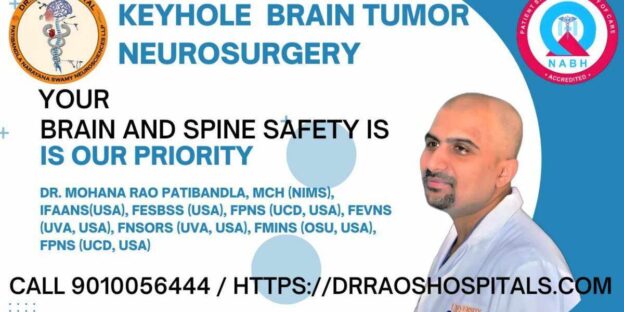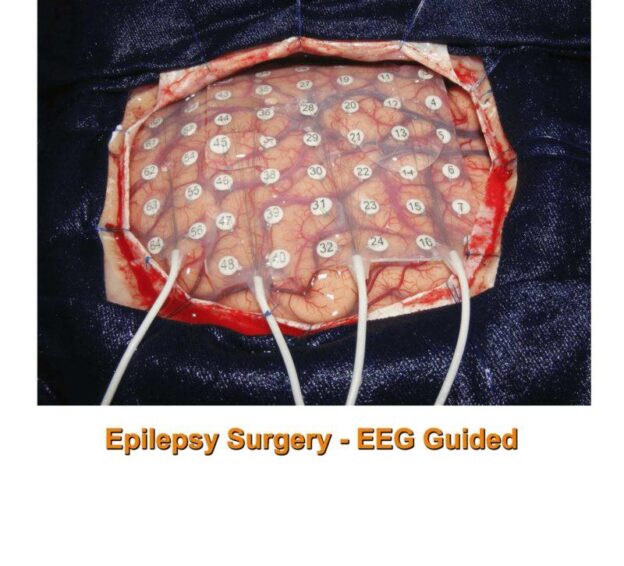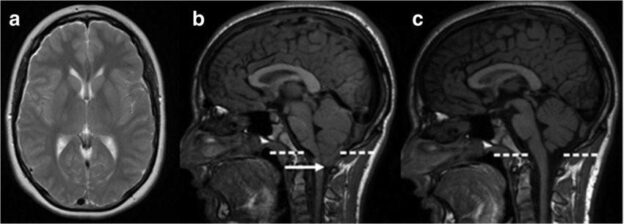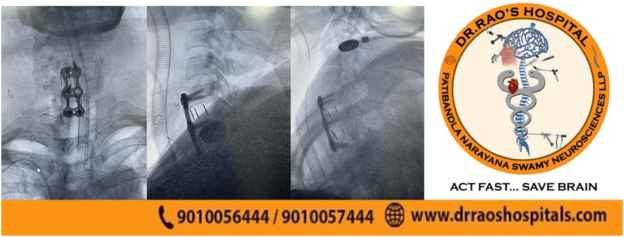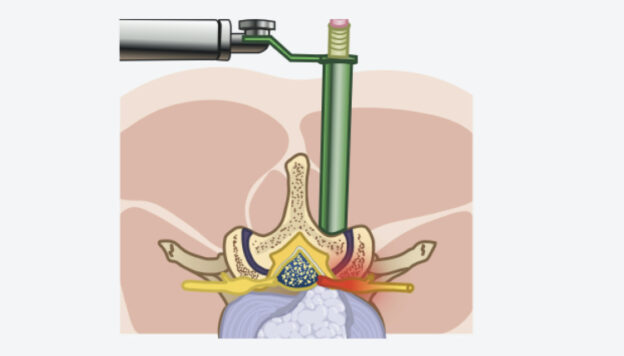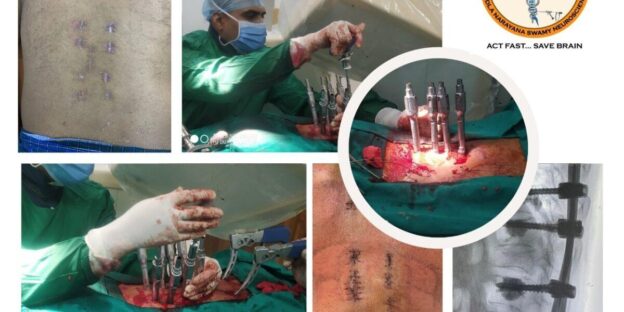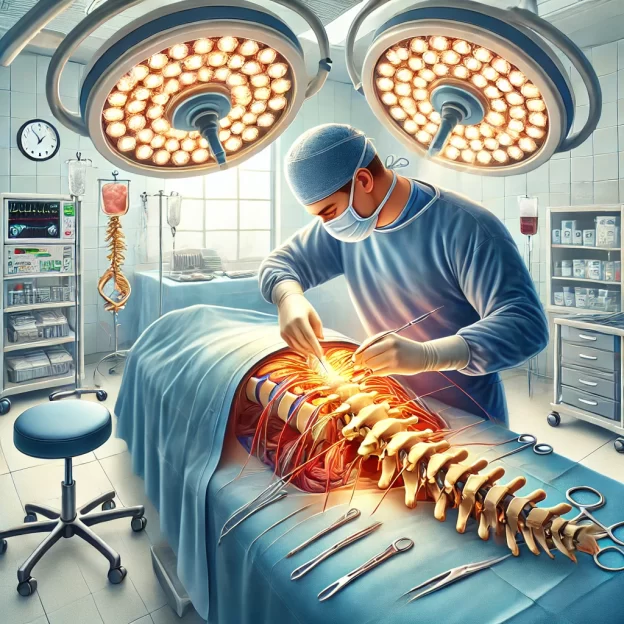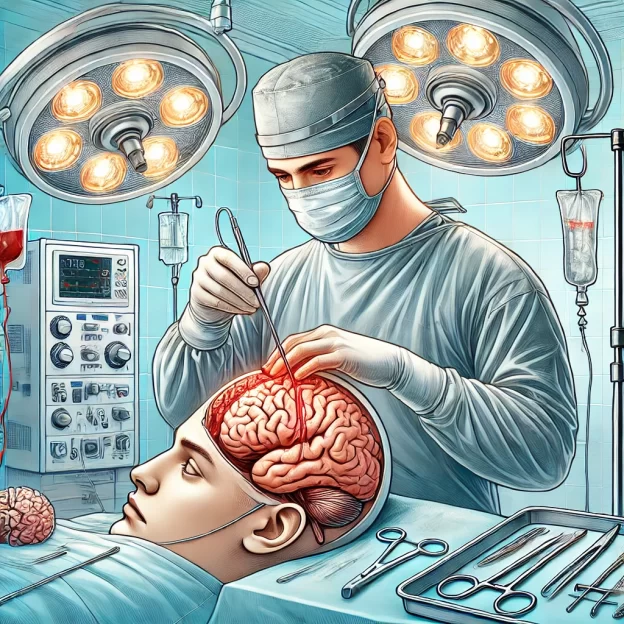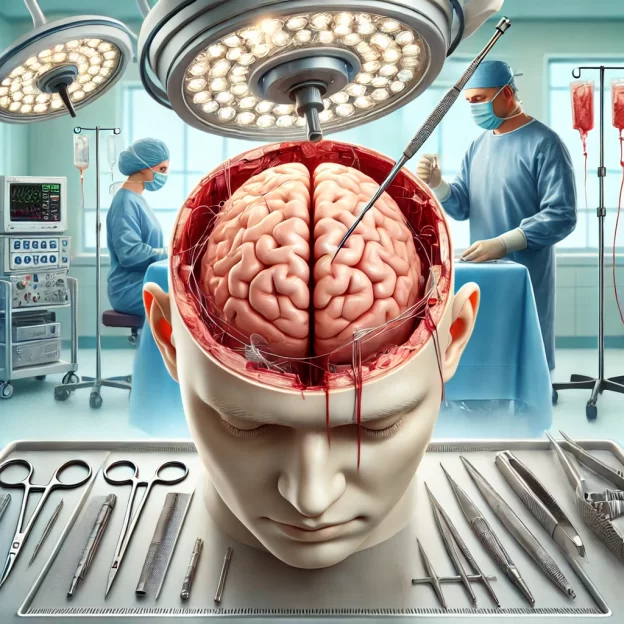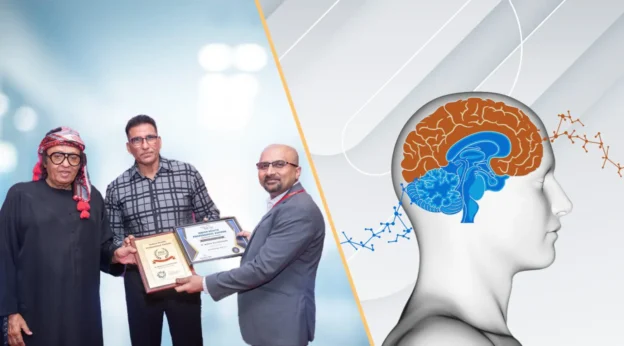Neuro Best Doctor: Dr. Rao at Dr. Rao’s Hospital, Guntur
Finding the best doctor can make all the difference when treating complex neurological conditions. Dr. Mohana Rao Patibandla at Dr. Rao’s Hospital in Guntur, India, is widely regarded as one of the top neurosurgeons in the country. With an impressive educational background and years of experience performing intricate brain, spine, and endovascular surgeries, Dr. Rao stands out as a leading expert in his field. His hospital, Dr. Rao’s Hospital, is one of India’s top facilities for neurological care, thanks to its cutting-edge technology and qualified staff.
Dr. Rao is renowned for his precision in diagnosing and treating a wide range of neurological issues, from brain tumors to spinal cord injuries. His patient-first approach and dedication to minimally invasive techniques set him apart from others in the field, making him the go-to neuro best doctor for domestic and international patients seeking world-class care.
Best Spinal Cord Doctor: Why Dr. Rao Is a Leader in Spinal Surgery
Spinal cord injuries are among the most complex medical conditions to treat. As the best spinal cord doctor, Dr. Rao has successfully treated numerous patients suffering from spinal trauma, degenerative conditions, and deformities. His deep understanding of spinal anatomy and his mastery of advanced surgical techniques, including minimally invasive procedures, have earned him a reputation as a leading spinal cord surgeon.
At Dr. Rao’s Hospital, he leads a multidisciplinary team that offers personalized care plans for each patient, ensuring the best possible outcome. Whether it’s a spinal cord injury from an accident or degenerative issues from aging, Dr. Rao’s expertise in this area has helped many patients regain mobility and improve their quality of life.
Hospital Surgeon: World-Class Neurosurgery at Dr. Rao’s Hospital
As a hospital surgeon, Dr. Rao has significantly impacted Dr. Rao’s Hospital in Guntur. His ability to handle complex neurosurgical cases has positioned the hospital as a top destination for patients requiring advanced neurological and spinal care. Dr. Rao’s surgical team is equipped with state-of-the-art tools, including robotic-assisted surgery and advanced imaging techniques, allowing more accurate diagnosis and treatment planning.
The hospital provides comprehensive care under one roof, whether brain or spinal surgery. This integrated approach ensures that patients receive the best surgical treatment, excellent post-operative care, and rehabilitation.
Best Neuro Doctor: Dr. Rao’s Expertise in Neurology and Neurosurgery
Dr. Rao’s extensive experience and specialized training make him the best neuro doctor in Guntur and one of the top in India. His qualifications include multiple fellowships from renowned institutions in the USA, making him highly proficient in the latest neurosurgical techniques.
He specializes in treating conditions such as brain tumors, aneurysms, spinal cord injuries, and various neurological disorders. Patients suffering from complex neurological conditions come from all over the world to consult with Dr. Rao, thanks to his proven track record of successful outcomes.
Hospital Procedure: Advanced Neurosurgical Procedures at Dr. Rao’s Hospital
At Dr. Rao’s Hospital, every procedure is performed with meticulous attention to detail. The hospital offers a wide range of methods for neurological and spinal conditions. From brain tumor excisions and aneurysm repairs to spinal cord decompression and fusion surgeries, it is a one-stop center for comprehensive care.
Dr. Rao emphasizes using minimally invasive techniques whenever possible, allowing patients to recover faster and with fewer complications. The hospital’s top-notch facilities and dedicated staff ensure that patients receive the highest level of care throughout their treatment.
Brain Neuro Surgery: Dr. Rao’s Expertise in Brain Surgery
Brain neuro surgery requires precision, expertise, and access to the latest surgical technology. Dr. Rao, with his extensive experience and global training, has performed numerous successful brain surgeries, including tumor resections, treatment of aneurysms, and deep brain stimulation (DBS) for Parkinson’s disease. His approach focuses on minimizing risks and optimizing recovery times, making him a top choice for patients requiring brain surgery in India.
With the state-of-the-art equipment available at Dr. Rao’s Hospital, he can deliver superior outcomes for even the most complicated cases. The hospital’s dedicated neuro ICU ensures that post-operative care is of the highest standard, enabling patients to recover faster and return to their daily lives.
Type of Spinal Surgery: Cutting-Edge Procedures at Dr. Rao’s Hospital
At Dr. Rao’s Hospital, several types of spinal surgery are performed, each tailored to the patient’s specific needs. These include:
- Discectomy: To remove herniated disc material.
- Spinal Fusion: To stabilize the spine.
- Laminectomy: To relieve pressure on the spinal cord or nerves.
- Vertebroplasty and Kyphoplasty: To treat compression fractures.
- Minimally Invasive Spine Surgery: This is for quicker recovery times and reduced surgical risks.
Dr. Rao’s expertise in these surgical techniques ensures that each patient receives the most appropriate treatment for their condition, focusing on minimally invasive methods to reduce recovery time. In a recent India today article.
Surgical Techniques: Minimally Invasive Methods by Dr. Rao
The surgical techniques used by Dr. Rao at his hospital are at the forefront of medical technology. Minimally invasive techniques allow for smaller incisions, reduced blood loss, and faster recovery times compared to traditional surgery. Whether performing brain or spinal surgery, Dr. Rao uses these advanced methods to ensure the best patient outcomes.
The hospital is equipped with robotic-assisted surgery tools, intraoperative MRI, and navigation systems, further enhancing these techniques’ precision.
Cervical Pain Surgery: Effective Treatment for Neck Pain
Chronic neck pain can be debilitating, and in some cases, surgery is the best option for long-term relief. Cervical pain surgery at Dr. Rao’s Hospital is performed using minimally invasive techniques to address issues like herniated discs, spinal stenosis, or degenerative disc disease.
Patients suffering from cervical neck pain can benefit from advanced procedures such as cervical discectomy and fusion, ensuring quick relief and a faster return to normal activities.
Cervical Neck Pain Surgery: Advanced Care at Dr. Rao’s Hospital
Dr. Rao specializes in cervical neck pain surgery, offering relief to patients suffering from conditions like cervical radiculopathy, spinal stenosis, or herniated discs. His minimally invasive techniques ensure a faster recovery, less post-operative pain, and fewer complications. With his expertise, patients can regain mobility and live pain-free lives.
Medical Treatment in India: Affordable and High-Quality Care
India has become a hub for medical treatment, offering world-class care at a fraction of the cost compared to Western countries. Dr. Rao’s Hospital is at the forefront of this trend, attracting international patients seeking advanced neurosurgical and spinal treatments.
Patients from around the globe travel to Guntur for surgery by Dr. Rao, drawn by his expertise and the hospital’s reputation for high-quality care at affordable rates.
MD Surgeon: Dr. Rao’s Credentials and Expertise
As an MD surgeon, Dr. Rao’s qualifications are unparalleled. His advanced training in neurosurgery, endovascular surgery, and minimally invasive spine surgery has earned him numerous accolades. His patients benefit from his commitment to providing the latest, evidence-based treatments and his dedication to achieving the best outcomes.
Deformity Correction: Expertise in Spinal Deformities
Spinal deformities, such as scoliosis or kyphosis, can severely impact a patient’s quality of life. Dr. Rao is an expert in deformity correction, offering treatments that can realign the spine and relieve pain. His use of minimally invasive surgical techniques ensures faster recovery and improved outcomes for patients suffering from these conditions.
Best Spine Specialist Near Me: Dr. Rao’s Leading Spine Care
If you’re looking for the best spine specialist near me, look no further than Dr. Rao. His unmatched expertise in spine surgery, combined with his commitment to minimally invasive techniques, makes him the top.
Dr. Rao’s Contact Information:

